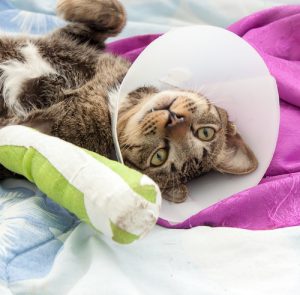Feline First Aid Certificate Level 3
- The Feline First Aid Course covers the objectives and rules of first aid, what should be included in a first aid kit and creating a safe environment.
- This course teaches methods of improvising items such as stretchers and splints and explains how to carry or restrain injured animals.
- After covering the subject of vital signs, cleaning wounds and applying dressings it goes on to examine some common circumstances that have resulted in injury and how to deal with them.
- These include traffic accidents, cuts and breaks, different types of burns, stings and poisons and more.
- Feline first aid is important for all people working with cats and for cat owners.
*You will have access to the course for 12 months only. You can purchase course extensions.
Unit 1
Anatomy, Physiology & Health Checks
Learn about body functions & processes in the domestic cat including: digestive tract processes; respiratory & heart rate, circulatory, blood & heart function; cells & tissues; skeletal system; excretory system; nervous & endocrine systems; urinary system: renal function. Students will be able to recognise body system processes and understand their function to the cat.
Learn about the structure & function of the integumentary system of the cat. Including, the skin: structure & function. Claws, hair/fur structure & function; retractable claws, dermis & epidermis. Subcutaneous tissues; secretory glands, self-grooming. Students will be able to identify how the integumentary system is structured to meet its function for the cat.
Learn about the Daily Health Check & how to recognise common health problems in the cat, this unit includes: Feline welfare, the 5 Freedoms, Animal Welfare Act (2006), handling, basic behaviour, signs of illness and recognising common feline health problems including: FUS, abscess, cystitis, hairballs, renal failure, acute abdomen, poisoning and parasitic infections.
Unit 2
Feline Health & Welfare
In this unit of the feline first aid course, you will learn about the basic principles of first aid for felines and how to preserve life and prevent further pain and stress until professional treatment is available.
Understand how to manage first aid treatment of a range of common injuries to the cat including: Eye injury, punctures/bite injuries; cuts & grazes; how to treat for shock, trauma or distress, monitoring vital signs: heart rate, respiratory rate, blood flow, poisons and road traffic incidents.
Learn how to identify items vital to a First Aid Kit for cats and describe improvised first aid equipment including; improvised equipment, muzzles, stretchers & splints.
Learn about vital signs, cleaning wounds and applying dressings. Examine some common circumstances that have resulted in injury and how to deal with them. These include traffic accidents, cuts and breaks, different types of burns, stings and poisons and more.
This unit includes information about handling techniques used for injured, ill or distressed cats.
We offer a selection of accredited and employer recognised courses specifically designed for careers working with animals.
If you have any questions about our courses, please contact us.
We’ve assisted many people to achieve their goal to work with animals. Read more about our 5-star reviews and student success stories.
Gain relevant training to achieve your goal to work with animals.



